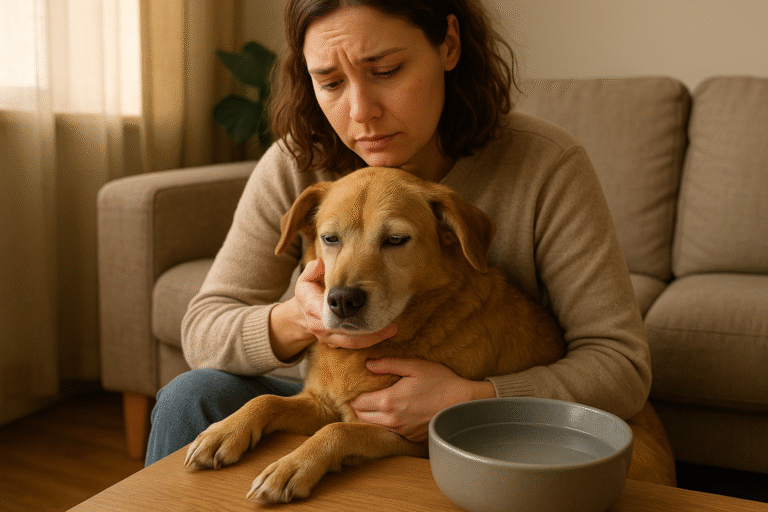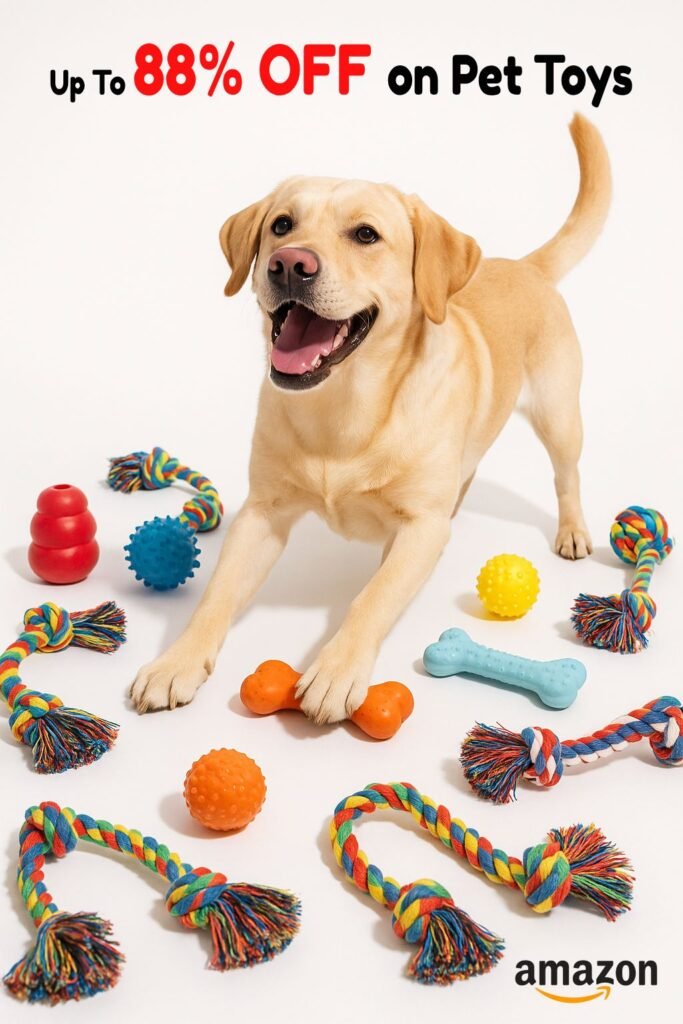
How to Keep Your Dog Happy, Healthy & Engaged
Dogs are no longer just animals that live in our homes; they are beloved family members. Their health, happiness, and emotional well-being matter just as much as ours. Modern pet parents know that providing food and shelter is not enough. Dogs also need mental stimulation, proper training, good nutrition, regular care, and emotional connection.
Table of Contents
ToggleIn recent years, there has been a shift in how we care for our pets. Owners are investing in enrichment toys, using smart technology, choosing healthier diets, and focusing more on preventive care. These trends are not simply passing fads. Instead, they reflect a growing understanding that a dog’s overall well-being depends on more than just basic needs.
This article will guide you through everything you should know about keeping your dog happy, healthy, and engaged. You will learn about mental enrichment, smart technology, holistic health, nutrition, socialization, training, and gear selection. By the end, you will have practical steps you can follow to transform your pet’s daily life.
1. Mental Enrichment: The Secret to a Happy Dog
Why mental enrichment is important
Dogs are intelligent and curious animals. Without enough stimulation, they may become bored, anxious, or even destructive. Mental enrichment provides the activities that keep their minds sharp and engaged.
A dog that is mentally stimulated is less likely to develop behavioral problems such as excessive barking, chewing, or digging. Moreover, enrichment helps reduce stress and anxiety, especially for dogs that spend time alone at home.
Examples of enrichment activities
Puzzle toys: Toys that require problem-solving to release treats.
Scent games: Hide treats around the house and encourage your dog to sniff them out.
Training sessions: Teach new tricks or reinforce old ones in short daily sessions.
Interactive feeders: Slow feeders or treat-dispensing balls make mealtime fun.
DIY games: Even a simple cardboard box filled with crumpled paper and hidden treats can provide hours of stimulation.
The benefits you’ll see
A calmer, more relaxed pet.
Reduced destructive behavior.
Better focus and obedience.
A stronger bond between you and your dog.
Transitioning from a simple walk to more engaging activities makes a visible difference. Moreover, your dog will be happier, and you’ll enjoy a more rewarding relationship.
2. The Rise of Smart Technology in Pet Care
Technology is transforming the way we care for our dogs. From smart collars to automatic feeders, these innovations help us monitor and improve pet health.
Activity trackers and health monitors
Just like fitness watches for humans, dog activity trackers can monitor steps, sleep, heart rate, and more. These devices provide useful insights into your dog’s daily patterns. If something unusual occurs, such as reduced activity or restlessness, it may signal a health issue.
Smart feeders and dispensers
Automatic feeders ensure your dog gets the right portion of food at the right time. This is especially helpful for busy owners or dogs on strict diets. Many smart feeders connect to mobile apps, allowing you to schedule or adjust meals remotely.
Interactive cameras and toys
Smart cameras let you see and talk to your dog while you’re away. Some even dispense treats. Interactive toys that move or respond to your dog’s behavior can also reduce boredom when you’re not home.
The balance between tech and care
While technology is helpful, it should never replace personal interaction. Dogs still need your presence, affection, and training. Use smart devices as supportive tools, not as substitutes for real bonding time.
3. Holistic Health and Preventive Care
A proactive approach to health ensures your dog enjoys a longer, more comfortable life.
Nutrition beyond kibble
Pet parents are moving away from generic kibble and toward fresh or functional diets. Many prefer limited-ingredient meals, grain-free options, or raw diets. Some are even exploring insect protein and alternative proteins for sustainability.
When choosing food, always consult a veterinarian. Dogs have unique needs based on their breed, age, and health condition.
Supplements and natural boosters
Popular supplements include:
Omega-3 fatty acids for shiny coats and healthy joints.
Probiotics for better digestion.
Glucosamine for joint health in older dogs.
However, supplements should be chosen carefully. Too much of a good thing can harm your pet. Always follow your vet’s advice.
Dental care
Dental health is often ignored but is crucial for overall well-being. Poor oral hygiene can lead to infections and even affect organs. Brush your dog’s teeth regularly, provide dental chews, and schedule professional cleanings when needed.
Physical therapies and alternative care
Massage, hydrotherapy, and physiotherapy are gaining popularity, especially for senior dogs. These therapies improve mobility, reduce pain, and enhance recovery after surgery or injury.
Routine check-ups
Annual or semi-annual vet visits can catch health issues early. Routine bloodwork, dental exams, and weight monitoring prevent small problems from becoming serious.
4. Training, Socialization, and Play
A well-behaved dog is not only easier to manage but also happier and more confident.
Positive reinforcement
Reward-based training is far more effective than punishment. Treats, toys, or praise help reinforce good behavior. Basic commands like sit, stay, and come are essential for safety and control.
The importance of socialization
Exposing your dog to different people, animals, and environments reduces fear and aggression. Well-socialized dogs adapt more easily to new situations and enjoy outings more.
Playtime for joy and exercise
Play is essential for bonding and health. Activities like fetch, tug-of-war, and hide-and-seek keep your dog active and entertained. Rotate toys frequently to prevent boredom.
Dealing with problem behaviors
If your dog barks excessively or chews furniture, don’t just punish the behavior. Understand the cause. Often, bad behavior signals boredom, anxiety, or a lack of exercise. Redirect energy into positive outlets instead.
5. Choosing the Right Gear and Products
Pet products are everywhere, but not all are safe or durable.
Toys and chews
Choose sturdy, non-toxic toys that match your dog’s size and chewing habits. Replace damaged toys quickly to prevent accidents.
Bedding and crates
Comfortable beds and crates provide security and rest. Orthopedic beds are ideal for senior dogs with joint issues.
Leashes, harnesses, and collars
Harnesses reduce neck strain and give you better control. Reflective materials add safety during night walks.
Grooming tools
Invest in good brushes, clippers, and ear-cleaning supplies. Regular grooming not only keeps your dog clean but also helps you detect skin issues early.
Smart buying tips
Read reviews from real pet owners.
Avoid cheap imitations that may break easily.
Buy from trusted brands.
Quality lasts longer and saves money in the long run.
6. A 30-Day Action Plan for Dog Owners
| Week | Focus Area | Key Actions |
|---|---|---|
| 1 | Mental Enrichment & Routine | Introduce one puzzle toy, set a daily walking schedule, and start 5-minute training sessions. |
| 2 | Health & Nutrition | Visit the vet for a check-up, review diet, and adjust feeding habits. |
| 3 | Training & Gear | Teach two new commands, upgrade harness or leash, and add a new toy. |
| 4 | Socialization & Evaluation | Visit a dog-friendly park, expose your dog to new people, and review progress. |
By the end of the month, you’ll notice positive changes in your dog’s behavior and energy levels.
Conclusion
Caring for a dog is a joyful responsibility. When you provide enrichment, proper training, balanced nutrition, and preventive healthcare, you create a thriving environment for your pet.
Dogs that are engaged and cared for are more confident, less anxious, and easier to train. With the right mix of mental challenges, physical care, and emotional bonding, you will have a companion who is not only healthy but also truly happy.
Your dog gives you loyalty and love every day. By adopting these practices, you return that love in the best possible way.
FAQs
How can I keep my dog happy and healthy?
You can keep your dog happy and healthy with mental enrichment, proper training, balanced nutrition, preventive healthcare, and daily bonding time.
What are the best mental enrichment activities for dogs?
Puzzle toys, scent games, interactive feeders, and short training sessions are excellent mental enrichment activities that keep dogs engaged and reduce boredom.
Is smart technology useful for dog care?
Yes, smart pet devices like activity trackers, automatic feeders, and cameras can help monitor your dog’s health and keep them engaged while you are away.
What holistic health tips should dog owners follow?
Dog owners should focus on nutrition beyond kibble, supplements for joint and digestive health, dental care, regular check-ups, and physical therapies like massage or hydrotherapy.
Recent Posts









Related Topics
Copyright © 2025 The Pet Blog – Expert Tips, Care Guides & Fun Facts for Every Pet Lover.


